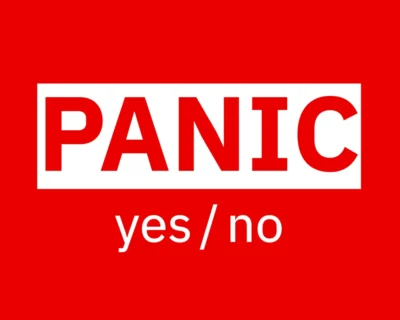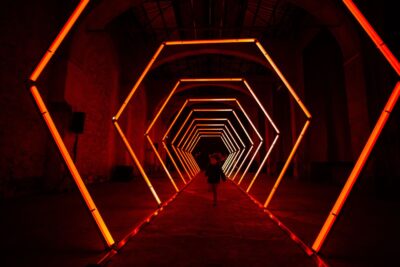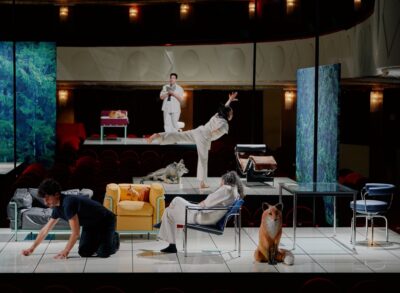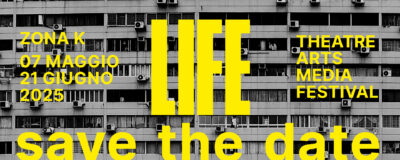
• • • revue d’art en ligne : arts médiatiques & cyberculture
Juillet 2018
Dans le cadre du dossier Affect ou émotion en art immersif et interactif, Louise Boisclair s’entretient avec Lorella Abenavoli, artiste multidisciplinaire dont la démarche s’élabore entre recherche et création à travers des explorations sonores dans une dimension performative. Le portfolio présenté ici donne un aperçu de ses installations et de ses compositions sonores singulières.
Poursuivant le dossier Corps en scène : l’acteur face aux écrans – Bodies on Stage : The Actor Confronted with Screens, dirigé par Josette Féral, Dorota Sajewska et Dorota Sosnowska révèlent comment l’utilisation des nouveaux média permet de multiplier et de renforcer la présence des acteurs sur scène dans une dimension politique, Sebastian Samur and Richard Windeyer examinent les modulations vocales et digitales des performeurs et des spectateurs et Tony McCaffrey questionne, entres autres, l’impact des technologies sur les acteurs.
Christine Palmiéri
Portfolio Lorella Abenavoli
Affect ou émotion
en art immersif et interactif
Sonifier la phusis

Louise Boisclair
Cet entretien en deux parties porte sur le travail de recherche-création d’installation sonore de Lorella Abenavoli, il s’inscrit dans le contexte du dossier Affect ou Émotion en art immersif et interactif. L’artiste présente sa démarche puis revisite quelques-unes de ses œuvres dont Le Souffle de la Terre et Verticale, L. son d. la m..té. d. .a sève d..s un a.bre au pr..temps, en évoquant son rapport intime avec la création et en développant ses conceptions de la spatialisation, de la sonification et de l’audification. [suite…]
Audifier et spatialiser l’Einfühlung

Louise Boisclair
Dans cette seconde partie de l’entretien avec Lorella Abenavoli, il sera question de son rapport aux éléments et aux matériaux, d’affect et de certains choix qu’elle a effectués dans son travail de sculpteure. Il sera aussi question des dimensions historiques et technologiques, mais aussi écologiques, artistiques et poétiques, qui ont renouvelé ses conceptions de la forme, de la représentation et du temps. Enfin l’artiste explique le terme « so(g)nification », néologisme qui lui est propre, et le met en relation avec les multiples sens de la sonification. [suite…]
L’acteur face aux écrans
Bodies on Stage :
The Actor Confronted with Screens
Body As Medium. Between Theory
and Technology of Theater

Dorota Sajewska and Dorota Sosnowska
We will present the theoretical approach to the problems of body and technology in stage performance. The starting point will be the status of the categories such as presence, ephemerality, immediacy of the (theatre) performance radically undermined in the texts of performance studies scholars such as Rebecca Schneider, Amelia Jones or Philip Auslander. Utilizing examples of performances from young Polish theatre:Krzysztof Garbaczewski (b.1983) and Radosław Rychcik (b.1981), we will juxtapose two functioning models of body-technology relation on stage. The first one – represented by Garbaczewski – is based on understanding the body as always mediated. It multiplies (undermines) the body’s presence by use of audiovisual means. The second one – Rychcik’s case – is to push the theatrical presence of the body to the absolute maximum. In this case an audiovisual layer is used to build a strong opposition to the actor’s stage presence. The two examples will be used to propose new theoretical approaches. We would like to show that such stage phenomena are not only the sign of a changing technological reality, but are also important theoretical input in the understanding of theatre itself. We will posit that every single body on stage (no matter if consciously, as in Garbaczewski’s case, or unconsciously, as in Rychcik’s case) is already mediated, and the use of technological tools is a way to play with this specific aspect of theatre’s corporeality. This broader perspective will also incorporate elements of the political dimension of annexing media-mediated and media-manipulated corporeality, for it will follow the apparently transparent and natural dimension of such actions, whereby once again, as postulated by Jacques Rancière it will turn aesthetic considerations into political considerations. [suite…]
Moi qui parle à moi-même dans le numérique
Auditory Alienation and Liberation
for the Intermedial Performer

Sebastian Samur and Richard Windeyer
To what extent does vocal modulation both alienate and liberate performers on the intermedial stage? Philip Auslander and Matthew Causey, among a growing number of contemporary theoreticians, have pointed to the « otherness » and « uncanny » experiences of both performers and spectators when confronted with digital doubles. How have artists working with vocal modulation negotiated these experiences and incorporated them into their practice? Our presentation will juxtapose an analysis of key works by three contemporary performance artists – The Wooster Group’s , Laurie Anderson’s O Superman and Marie Brassard’s Peep Show – with a series of digital audio workshops held at the University of Toronto to better understand how both audiences and performers experience the disembodiment inherent in digital voice modulation. Anderson and Brassard speak of alter-egos or theatrical extensions of character, while Wooster Group performers describe increasing freedom through loss of control over technological modulations. In researching these works, we will examine whether an artist’s experiences are at odds with those of the spectator, who may experience a split or delayed presence of the performer. These experiences will further be compared to an in-house creation of Kurt Schwitters’ Ursonate. It has been described as written in a « universal language, » and we will attempt to stretch its universality into a digital soundscape through voice modulation, conscious of the artist experiences described above. Examining the psychoacoustic effects of digital modulation techniques applied to pitch/harmonics, volume, resonance, delay, and spatial (dis)location, we will compare experiences of performers, designers, and spectators with the experiences described in our case studies. Doing so will allow us to further identify how voice modulation both alienates and liberates, and how the actor can better situate him/herself within an intermedial practice. [suite…]
A Dance that Draws you to the Edge of your Seat:
Acting and Disability Faced with Technology
Tony McCaffrey
“Sarah Mainwaring’s palsy turns the task of clipping a microphone into its stand into a dance that draws you to the edge of your seat.” This is how the reviewer for theSydney Morning Herald described the tremulous and fragile gestures of a performer with cerebral palsy, who laboriously, in fits and starts of movement, sets up a microphone at the beginning of Super Discount, (2013) by Back to Back Theatre , an internationally renowned ensemble of people perceived to have intellectual disabilities. At the conclusion of a previous show, Food Court she delivered Caliban’s speech from The Tempest, ‘The isle is full of noises . . .’ in a similarly tremulous and fragile voice. As she spoke into a microphone (itself tuned to reverberate strategically) the sound of her voice was accompanied by the words of the speech projected in surtitles as animated text either rushing headlong or stalling, apparently (voice-)activated by the fits and starts of her distinctive delivery.
The work of Back to Back Theatre Company is, amongst many other things, an ongoing interrogation of the interaction between technology and performance (onstage and off). By considering the work of this company, and of Zurich’s Theatre Hora , and my own practical research with Different Light Theatre , an ensemble of disabled performers in New Zealand, I wish to explore the following questions: Does technology facilitate, aestheticize or problematize an access to “voice” for disabled performers? What place does assistive or aestheticizing technology have in how the transmission of affect and meaning is negotiated between disabled performer and (supposedly able) audience? What are the political, aesthetic and ethical implications of this interaction between the perceived fragility of the performer and the supposed communicative empowerment of technology? What is it about such performance that “draws you to the edge of your seat?” [suite…]







